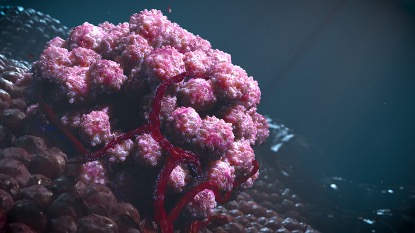FDA Approves Novartis’ Lutathera for Pediatric Patients with Gastroenteropancreatic Neuroendocrine Tumors
April 25, 2024
Source: drugdu
 514
514
Davy James
Lutathera is the first FDA-approved treatment for younger patients with somatostatin receptor-positive gastroenteropancreatic neuroendocrine tumors.
 The FDA has approved Novartis’ Lutathera (lutetium Lu 177 dotatate) to treat patients aged 12 years and older with somatostatin receptor (SSTR)–positive gastroenteropancreatic neuroendocrine tumors (GEP-NETs), including foregut, midgut, and hindgut NETs. The regulatory action makes Lutathera the first therapy specifically approved to treat GEP-NETs in a pediatric patient population.1
The FDA has approved Novartis’ Lutathera (lutetium Lu 177 dotatate) to treat patients aged 12 years and older with somatostatin receptor (SSTR)–positive gastroenteropancreatic neuroendocrine tumors (GEP-NETs), including foregut, midgut, and hindgut NETs. The regulatory action makes Lutathera the first therapy specifically approved to treat GEP-NETs in a pediatric patient population.1
“Lutathera is now the very first therapy approved specifically for children with GEP-NETs, offering new hope to young patients living with this rare cancer,” Tina Deignan, Novartis therapeutic area head, Oncology US, said in a press release. “Radioligand therapies (RLTs) have extraordinary potential to shape the future of cancer care. With this approval, we have taken another vital step toward fulfilling that vision, strengthening our commitment to researching and developing the RLT platform across multiple cancer types and treatment settings.”
NETs, which are generally considered a slow-growing malignancy, develop in neuroendocrine cells throughout the body. Because the disease grows slowly, diagnosis is typically delayed, with approximately 10% to 20% of pediatric patients diagnosed with metastatic disease.
Lutathera has previously been approved by the FDA for adults with SSTR+ GEP-NETs, including GEP-NETs in the foregut, midgut, and hindgut. The drug has also been approved in Europe for unresectable or metastatic, progressive, well-differentiated (G1 and G2) SSTR+ GEP-NETs in adults and in Japan for SSTR+ NETs.2
The approval for pediatric patients was based on findings from the ongoing, international, multicenter, open-label, single-arm Phase II NETTER-P trial (NCT04711135) and efficacy data from the Phase III NETTER-1 trial (NCT01578239). NETTER-P analyzed the safety of Lutathera in nine pediatric patients, aged 12 to 17 years, with locally advanced or metastatic, inoperable, histologically proven, G1 or G2, well-differentiated GEP-NETs. The trial also evaluated a group of patients with locally advanced or metastatic, inoperable, histologically proven pheochromocytoma or paraganglioma.3 In terms of safety, Lutathera’s profile was consistent with findings from the adult population included in the pivotal NETTER-1 trial.
NETTER-1 analyzed Lutathera’s efficacy and safety in adults with advanced, progressive, SSTR-positive midgut neuroendocrine tumors, who were randomly assigned to a combination of Lutathera with best supportive care (BSC), including octreotide long-acting repeatable compared with BSC monotherapy.4
Patients administered the Lutathera combination (n = 116) had an estimated 20-month progression-free survival rate of 65.2% vs. 10.8% in the BSC cohort (n = 113). The overall response rate in the Lutathera cohort was 18% compared with 3% in the BSC cohort.
“While GEP-NETs in children and adolescents are rare, the impact can be devastating. Today’s approval addresses a critical need for new treatment options for these vulnerable patients,” trial investigator Theodore Laetsch, MD, director, Developmental Therapeutics Program, Children’s Hospital of Philadelphia, said in a press release. “The introduction of radioligand therapy significantly advanced how we treat GEP-NETs, and I’m encouraged that younger patients now have the potential to benefit from this innovation.”
Read more on
- CoreMedik Unlocks Dual Certifications for Implantation & Intervention of Artificial Heart December 25, 2025
- First in over 70 years! New drug for schizophrenia approved in China December 25, 2025
- Is the “anti-aging drug” a scientific breakthrough or a capital game? December 25, 2025
- Wegovy oral tablets receive FDA approval, ushering in the “dual-dosage era” for GLP-1 weight-loss drugs December 25, 2025
- The leading medical device company’s new venture is aiming for an IPO! December 25, 2025
your submission has already been received.
OK
Subscribe
Please enter a valid Email address!
Submit
The most relevant industry news & insight will be sent to you every two weeks.



